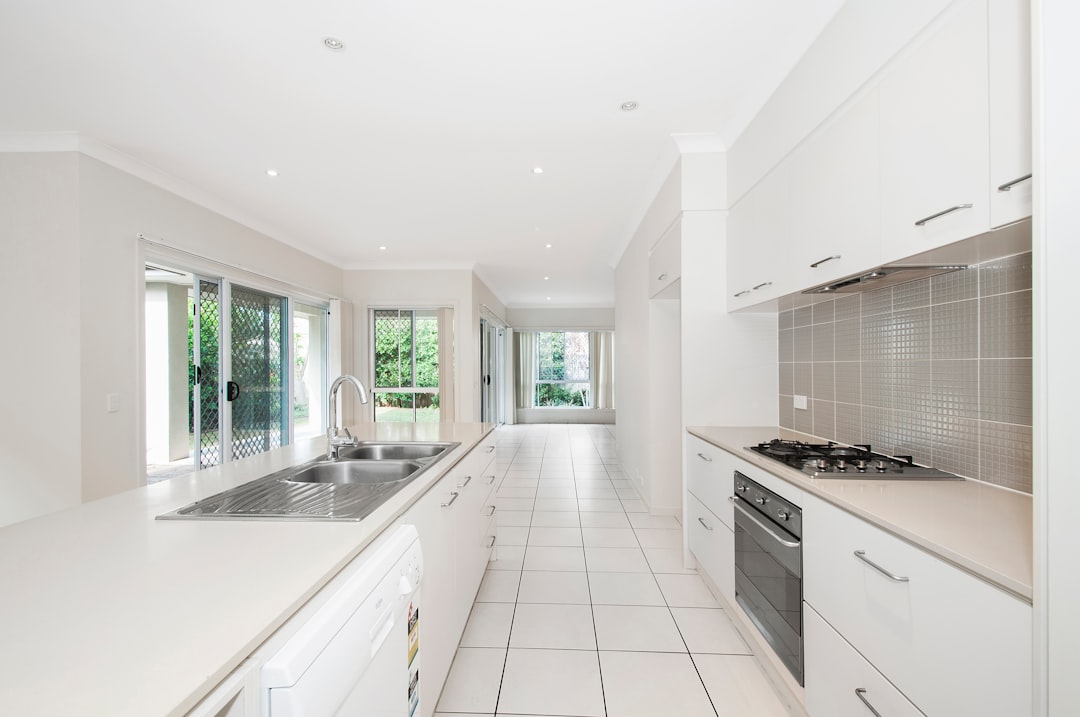

The commercial real estate market is a complex and dynamic ecosystem that is influenced by a variety of factors. These factors can have both short-term and long-term impacts on the market, shaping trends and driving investment decisions.
One of the key factors influencing the commercial real estate market is economic conditions. A strong economy typically leads to increased demand for commercial space as businesses expand and new ventures are launched. Conversely, during periods of economic downturn, demand for commercial real estate may decrease as businesses consolidate or downsize.
Another important factor is demographics. Population growth, urbanization trends, and shifting consumer preferences all play a role in determining the demand for different types of commercial properties. For example, an aging population may drive demand for healthcare facilities and senior living communities, while younger generations may prefer mixed-use developments with retail, office, and residential components.
Government policies and regulations also have a significant impact on the commercial real estate market. Zoning laws, tax incentives, environmental regulations, and building codes can all influence development decisions and affect property values. Changes in government policies, such as tax reforms or infrastructure investments, can create opportunities or challenges for investors in the commercial real estate sector.
Finally, global events and geopolitical factors can also shape the commercial real estate market. Trade tensions, currency fluctuations, natural disasters, and political instability in other countries can all ripple through the global economy and impact investor confidence in the real estate sector.
In conclusion, understanding the various factors that influence the commercial real estate market is essential for investors, developers, brokers, and policymakers to make informed decisions about buying, selling, leasing or developing properties. By staying attuned to economic trends, demographic shifts, regulatory changes,and global events,the stakeholders can navigate the complexities of this dynamic market with greater success.
Commercial real estate has long been a cornerstone of wealth creation, offering investors the potential for steady income, portfolio diversification, and long-term capital appreciation. From office spaces and retail shops to warehouses and industrial facilities, the commercial property sector provides a range of opportunities for individuals and businesses looking to make impactful investments.
The appeal of commercial real estate lies in its potential for consistent cash flow. Unlike residential properties, commercial leases often extend over several years, providing landlords with a predictable income stream. These leases are typically structured with incremental rent increases, ensuring that the property generates competitive returns over time. Additionally, many commercial tenants are businesses that prioritize stability and reliability, making them desirable occupants for landlords.
For those new to commercial real estate, understanding the market dynamics is crucial. The commercial property sector is influenced by factors such as location, economic trends, and demand for specific property types. Prime locations, particularly those with high foot traffic or strategic accessibility, tend to attract strong tenant interest and command higher rental rates. Working with professionals who have deep market insights can help investors identify lucrative opportunities and avoid costly mistakes.
Diversification is another key advantage of commercial real estate. Investors can select from a variety of asset types, including retail spaces, office buildings, and industrial facilities, each with unique market dynamics and potential returns. Diversifying across property types and locations minimizes risk, ensuring that an investor’s portfolio remains resilient in fluctuating economic conditions.
For business owners, owning commercial real estate offers additional advantages. Purchasing a property for operational use, such as a storefront or office, allows businesses to control their space and avoid rising rental costs. Moreover, property ownership can provide tax benefits and long-term financial stability, transforming real estate into a valuable asset on the company’s balance sheet.
Investing in commercial real estate is not without challenges. The sector requires careful planning, market research, and financial analysis to maximize returns. One critical consideration is tenant selection, as the success of a commercial property often hinges on the reliability and stability of its occupants. Professional property management services can help landlords attract and retain high-quality tenants, ensuring the property’s long-term profitability.
Financing is another important aspect of commercial real estate investment. Lenders typically require a larger down payment for commercial properties compared to residential ones, and loan terms may vary depending on the property’s type and intended use. Working with experienced financial advisors and brokers can streamline the financing process and ensure that investors secure favorable terms.
In today’s competitive real estate market, understanding the nuances of commercial property investments is essential. Whether you’re an entrepreneur looking to expand your business or an investor seeking to diversify your portfolio, commercial real estate offers a world of opportunities. By leveraging professional expertise, conducting thorough research, and staying attuned to market trends, investors can unlock the full potential of this dynamic and rewarding sector.

When it comes to the real estate market in Midway Point, one of the key factors that potential homebuyers often consider is the average age of homes on the market.. This information can provide valuable insights into the overall condition of properties in the area, as well as offer some indication of the types of features and amenities that may be common among available listings. In Midway Point, the average age of homes on the market can vary depending on a number of factors, including historical development patterns, recent construction trends, and fluctuations in housing demand.
Posted by on 2024-12-26

As of today, the current inventory of houses for sale in Midway Point is quite limited.. With a growing demand for housing in the area, properties are being snapped up quickly by eager buyers.
Posted by on 2024-12-26

When looking for a new home in Midway Point, it's important to consider the square footage range of available houses.. This will help you determine if a property is the right size for your needs and preferences. In Midway Point, there is a wide range of available houses with varying square footage.
Posted by on 2024-12-26

When it comes to properties for sale in Midway Point, one of the key factors that potential buyers consider is the lot size.. The typical lot size of properties for sale in Midway Point can vary depending on the specific neighborhood or development. In general, the lot sizes in Midway Point range from around 600 square meters to over 1000 square meters.
Posted by on 2024-12-26
| Midway Point
tipina (Southeast Tasmanian)
Hobart, Tasmania |
|||||||||||||||
|---|---|---|---|---|---|---|---|---|---|---|---|---|---|---|---|

Aerial view with causeway
|
|||||||||||||||
 |
|||||||||||||||
| Coordinates | 42°48′12″S 147°31′57″E / 42.80333°S 147.53250°E | ||||||||||||||
| Population | 2,859 (2016 census)[1] | ||||||||||||||
| Postcode(s) | 7171 | ||||||||||||||
| Location |
|
||||||||||||||
| LGA(s) | Sorell | ||||||||||||||
| Region | Hobart | ||||||||||||||
| State electorate(s) | Lyons | ||||||||||||||
| Federal division(s) | Lyons | ||||||||||||||
|
|||||||||||||||
Midway Point (paredarerme/palawa kani: tipina)[2] is a residential locality in the local government area (LGA) of Sorell in the South-east LGA region of Tasmania. The locality is about 5 kilometres (3.1 mi) south-west of the town of Sorell. The 2016 census recorded a population of 2859 for the state suburb of Midway Point.[1] It is located on a small peninsula with Orielton Lagoon on its eastern side and Pittwater on its southern and western sides. The suburb meets the mid-way point of the Sorell Causeway from Hobart to Sorell, hence the name. Mcgees Bridge is connected to Midway Point on the Pittwater side. The suburb lies close to Hobart International Airport and is approximately 21 km to Hobart via the Tasman Highway. In recent years Midway Point has become a popular commuter town for people working in Hobart.
Midway Point was gazetted as a locality in 1957.[3]
The waters of Pittwater form the eastern, southern and western boundaries.[4]
Route A3 (Tasman Highway) runs through the southern tip of the locality.[3][5]
Elise and the team at Nest Property did an excellent and thorough job arranging commencement of tenancy. They were available to answer my questions and provided clear instructions while working through the tenancy process. I am happy to recommend Nest to investors looking for a managing agent in southern Tasmania or to potential tenants seeking properties available for lease.
Meleah Oates is THE most amazing property manager. She has gone out of her way to help us remotely manage my mothers house. From helping us book trades, to stylists, her attention to detail has been incredible. I have never worked with a property manager as professional and genuine before. It's very refreshing:) Can't recommend her enough.
I have engaged Nest to manage my rental property since around 2009. Being a landlord that is living outside of Tasmania, it's very important that I have a great relationship with the company, and importantly with the property manager who looks after the house. I'm pleased to say that I have always had great relationships with staff at Nest Property. Since becoming my property manager, my current property Elise Holbrook has been fantastic to deal with. I have found her responsiveness and professionalism to be excellent and this has resulted in continued peace of mind that my property is being looked after well, and most importantly, my tenants are happy and comfortable, and their needs are met in a timely and efficient manner. I have no hesitation in recommending Elise Holbrook from Nest to manage your rental property.
I recently rented an apartment with the help of Elise, and the experience was fantastic! Elise was incredibly professional, responsive, and attentive to my needs. She made the entire process smooth and stress-free. Her knowledge of the market and attention to detail ensured I found the perfect place. Elise was always available to answer my questions and provided valuable advice along the way. I highly recommend Nest to anyone looking for a new home. Thank you for your outstanding service!
Some key factors to consider when investing in commercial real estate include location, potential rental income, maintenance costs, and potential for appreciation.